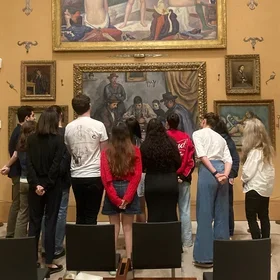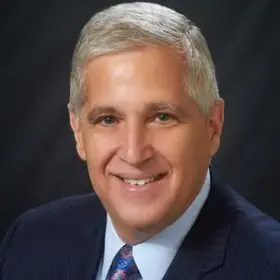For the past seven years, Jesse Scinto has been involved with the Strategic Communication program at Columbia's School of Professional Studies. After he graduated from the program, he continued working for major advertising agencies and consulting for top executives. He also began teaching in the Strategic Communication program. Now Scinto is taking on a new role as the Associate Director for Curriculum Development, where he will work on a curriculum that speaks to the changing professional needs in communication. We got the details in an email interview.
You've been a student and a faculty member in the Strategic Communication program. What's your new position?
In my new role, I'm leading curriculum development for our seven core courses. Our goal is to prepare students for success in this rapidly changing field. We’re taking a holistic approach, making sure our courses complement each other while addressing critical student needs. We’re also enriching our curriculum with the latest research, adult learning practices, and multi-media resources. In doing so, I believe we can meet or exceed the best professionally focused academic programs or private-sector training.
What kind of real-world experience do you bring to the position?
My own background is in advertising, where I’ve worked for big agencies like Ogilvy & Mather. More recently I’ve focused on presentation consulting, helping executives at major organizations like Coca-Cola and the United Nations Foundation hone and deliver messages persuasively to live audiences. My experience guides my approach to curriculum development. I’m keenly aware that our students are looking for knowledge and skills they can put into action. But to be strategic, they also need a grounding in evidence-based communication principles. We help students put theory into practice.
How is the curriculum changing for today’s communication professional?
Advances in technology and data-gathering are driving big changes in communication. We’ve retooled our curriculum to give students an advantage. Courses like Digital Media and Analytics and Research Methods and Insights help students make meaning of the vast troves of information available on audience behavior, so they can make informed decisions about communication strategy. We’re also increasing our electives and program options, which now include full-time, part-time, and executive formats. We believe greater flexibility will enhance the learning experience and better fit the different career paths our students choose.
What kind of skills do you teach in these classes?
We teach a systematic approach to communication—based on evidence, linked to business objectives, guided by strategy. Students learn to analyze audiences and develop persuasive appeals, choosing the most effective means of moving people to action. Courses like Principles in Persuasion and The Compelling Communicator teach influence strategies while providing training in practical skills, like pitching new business or handling difficult audiences. Courses like Leading People and Strategic Communication Management prepare students for leadership, increasing their knowledge of interpersonal communication and organizational dynamics. These business and management skills will help students rise to higher levels within their organizations and enjoy more fulfilling careers.
Do you have a real-life example of using strategic communication skills gained from academia in the real world that would be kind of applicable?
I’m making use of what I learned right now on a consulting project for a major financial-services firm. We’re developing a pitch to showcase their online app and user experience. To better understand the situation, I’ve conducted interviews with internal and external stakeholders. I’ve done a competitive analysis. I’ve helped come up with the “big idea” that differentiates their product from their competitors. All of this I learned to do while in the Strategic Communication program. But I think the most important thing we teach is the systematic approach. When you’re staring at a blank piece of paper, will you know what to do?


